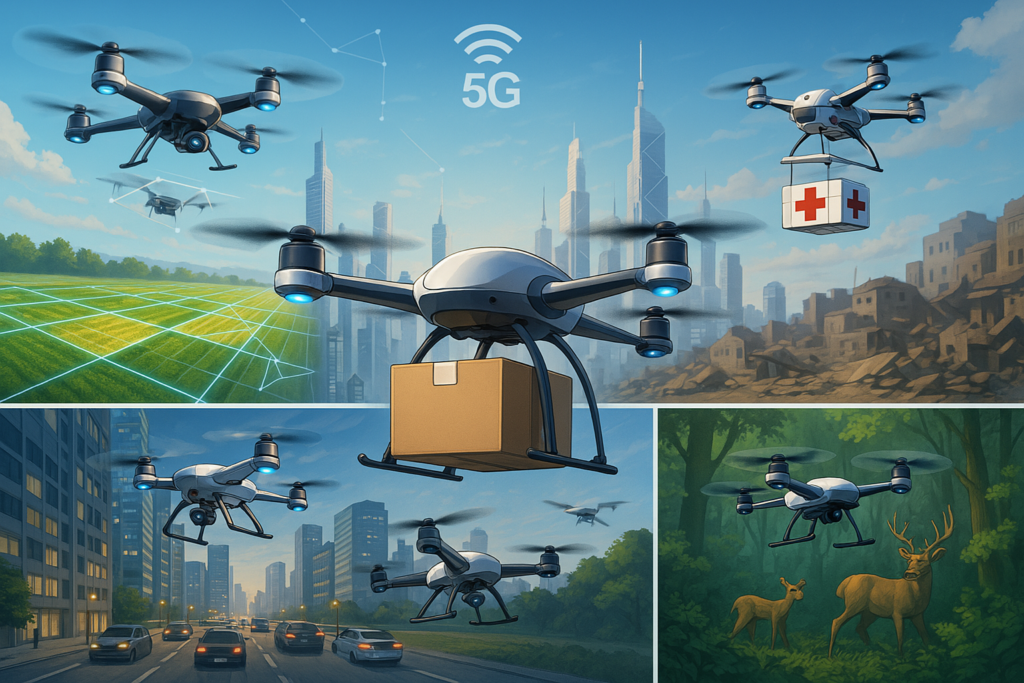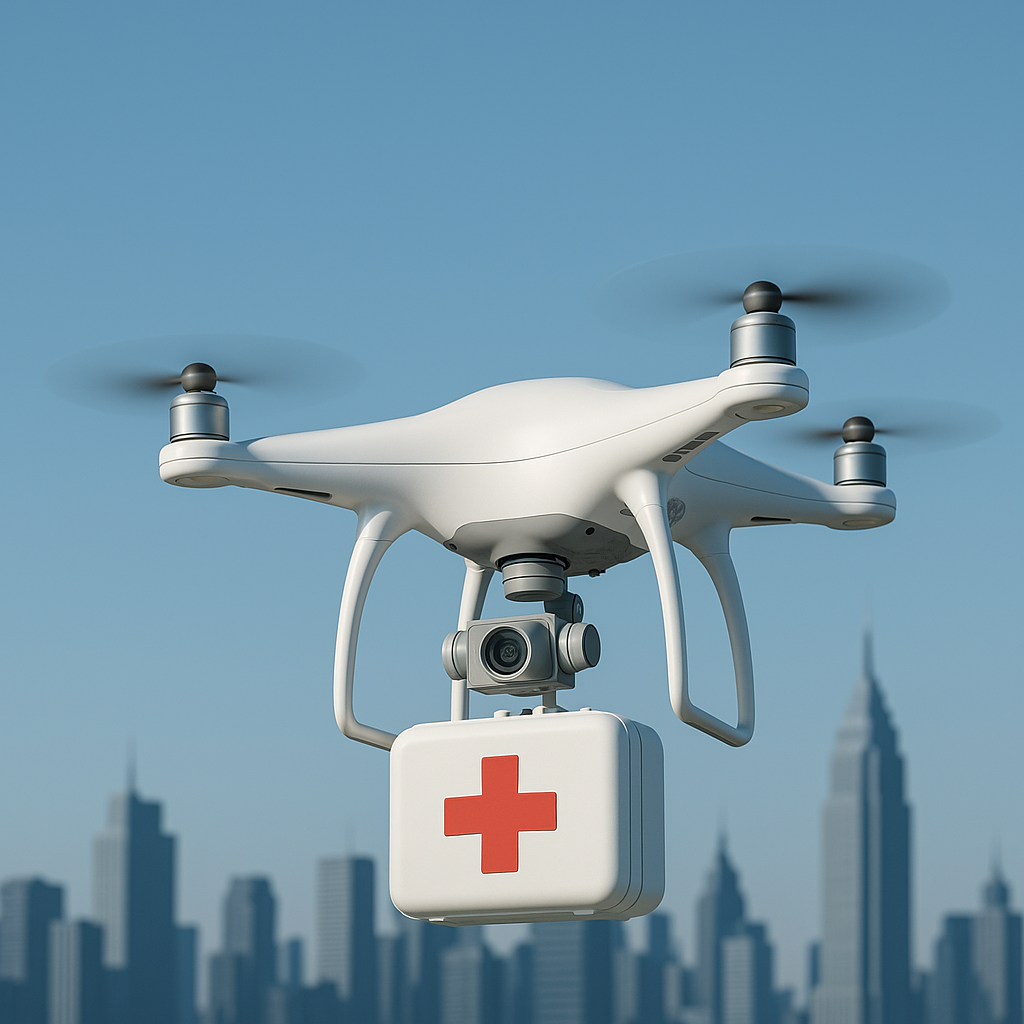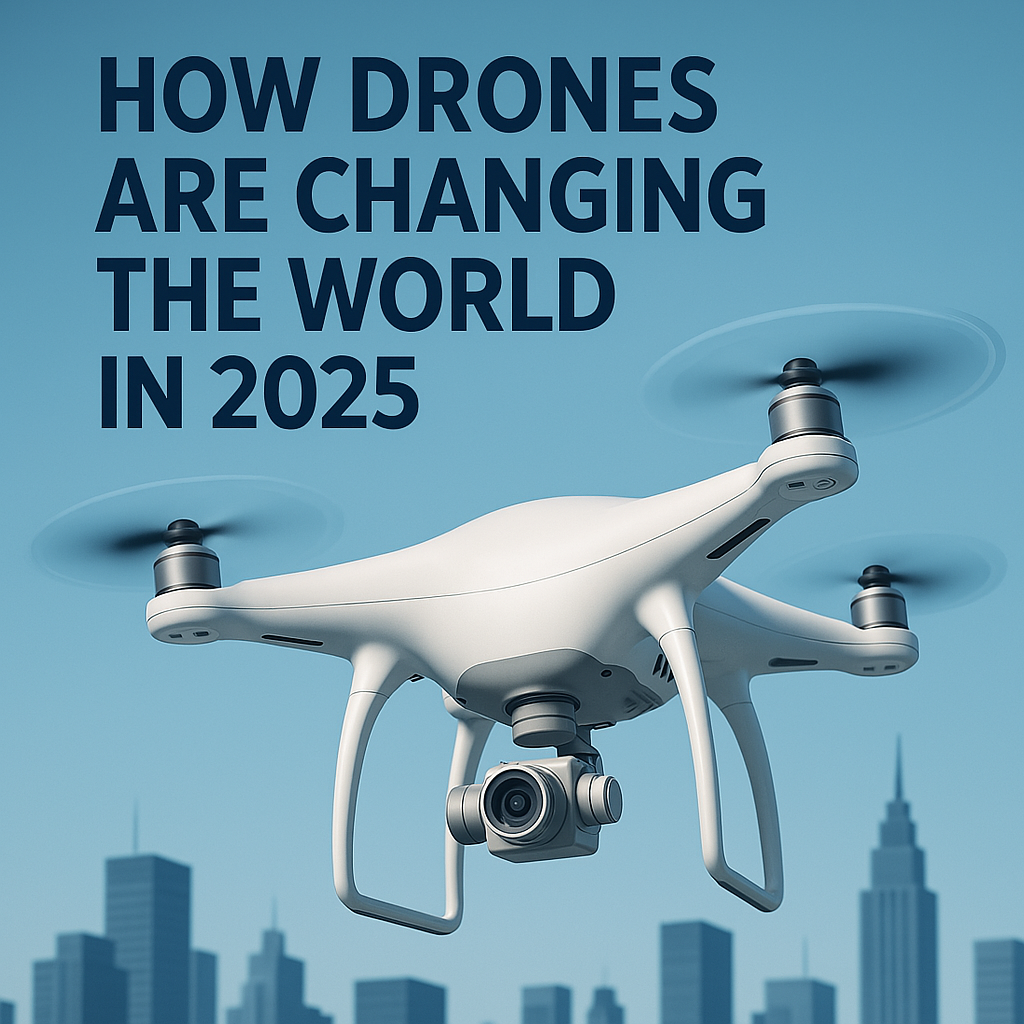The Future is Here: How Drones Are Revolutionizing Our World
Did you know that drones are delivering emergency medical supplies, helping farmers grow more food, and even protecting endangered wildlife? It’s not just science fiction—drones are transforming industries and daily life in 2025! Whether you’re curious about how drones work or wondering how they impact the world, this article will break it down in simple, easy-to-digest terms. Let’s dive into how these flying marvels are making our lives smarter, safer, and more exciting.

The Rise of Smart Drones: More Than Just Flying Cameras
Drones have evolved beyond hobbyist gadgets and aerial photography. In 2025, smart drones powered by AI and automation are playing critical roles across different industries worldwide. Here’s how:
1. Drones in Emergency Response: Life-Saving in Seconds
Imagine a natural disaster where roads are blocked, and emergency services can’t reach victims fast enough. Enter drones! In 2025, drones are:
- Delivering medical supplies – In remote areas or disaster zones, drones carry first-aid kits, defibrillators, and even medicines like insulin faster than traditional methods.
- Helping search and rescue teams – Thermal imaging drones can find missing persons, even in harsh conditions like dense forests or collapsed buildings.
- Monitoring wildfires – Drones equipped with heat sensors provide real-time updates to firefighters, helping them strategize and save lives.
Drones are already assisting disaster response efforts worldwide, from earthquake-affected areas in Asia to wildfire control in the U.S. and Australia.
2. Drones in Agriculture: Feeding the Future
Farming is getting a high-tech upgrade, thanks to drones. They help farmers in:
- Precision farming – Drones monitor crops and soil health using multispectral imaging, allowing farmers to apply water, fertilizers, or pesticides only where needed.
- Automated planting and spraying – Some drones can plant seeds or spray crops with pinpoint accuracy, reducing waste and increasing yields.
- Protecting crops – AI-driven drones detect pests early, preventing large-scale infestations and reducing the need for harmful chemicals.
In countries like the U.S., Brazil, and India, drones are improving agricultural efficiency, helping farmers save costs and boost productivity.
3. Drones in Urban Development: Smarter Cities, Safer Communities
Cities are getting smarter, and drones are at the heart of the transformation. In 2025, drones are:
- Inspecting infrastructure – From bridges to power lines, drones conduct maintenance checks, preventing potential disasters.
- Managing traffic – Real-time aerial surveillance helps city planners optimize road flow and reduce congestion.
- Enhancing security – Law enforcement uses drones for crowd monitoring, crime prevention, and surveillance in large public gatherings.
Governments across Europe, Asia, and North America are integrating drone-based monitoring systems to enhance urban safety and development.
4. Drones in E-Commerce and Delivery: Your Orders, Faster Than Ever
Have you ever wished your online order could arrive in minutes instead of days? Well, 2025 is making that possible!
- Instant grocery and food delivery – Companies like Amazon, Walmart, and local startups are using drones to deliver essential goods in record time.
- Eco-friendly shipping – Drones reduce the need for delivery trucks, cutting carbon emissions and making cities greener.
- Rural accessibility – Remote villages in Africa, Asia, and South America are now receiving deliveries previously impossible due to poor infrastructure.
Major e-commerce companies are investing heavily in drone delivery to make shopping faster and more efficient worldwide.
5. Drones in Conservation: Protecting Our Planet
Drones aren’t just about human convenience; they’re also helping save the planet.
- Wildlife protection – Conservationists use drones to track poachers and protect endangered species like rhinos and elephants.
- Marine research – Aerial drones monitor coral reefs and ocean health, aiding in climate change studies.
- Reforestation efforts – Drones are planting thousands of trees per day, helping combat deforestation more efficiently than human labor.
From the Amazon rainforest to African wildlife reserves, drones are playing a key role in conservation efforts globally.


The 2025 Drone Trends: What’s Next?
With technology advancing at lightning speed, here are some upcoming trends that will shape the future of drones:
- AI-powered autonomy – More drones will operate without human intervention, making tasks like deliveries, security, and disaster response faster and more reliable.
- 5G-enabled drone communication – High-speed data transmission will allow drones to coordinate with each other, improving efficiency in swarm-based applications.
- Longer battery life and solar charging – Innovations in battery tech mean drones can stay in the air longer, covering larger distances.
- Regulation and integration – Governments worldwide are setting up new laws to integrate drones safely into everyday life.
FAQs About Drones in 2025
1. Are drones legal worldwide?
Drone regulations vary by country. While drones are legal for personal and commercial use in many places, they require registration and compliance with local aviation authorities such as the FAA (U.S.), EASA (Europe), and DGCA (India).
2. Can drones be used for delivery globally?
Yes! Companies like Amazon, Google’s Wing, and local startups are testing drone deliveries in various countries. However, full-scale implementation depends on airspace regulations and safety concerns.
3. How are drones making a difference in developing countries?
Drones are being used to deliver medicines, monitor crop health, and provide disaster relief in regions with limited infrastructure, particularly in parts of Africa, Asia, and South America.
4. What are the challenges of drone adoption worldwide?
Some key challenges include government regulations, privacy concerns, battery limitations, and high costs of advanced drone technology.
5. How can I buy and use a drone in my country?
You can purchase drones from authorized retailers, but many countries require registration for medium and large drones. For personal use, nano drones (weighing below 250g) often do not require registration.
Final Thoughts: Are Drones the Future?
Drones are no longer just futuristic gadgets—they’re changing how we live, work, and protect our planet. Whether it’s life-saving deliveries, smarter farming, or safer cities, drones are making the world better in ways we never imagined.
What do you think about the future of drones? Are they exciting or a little scary? Share your thoughts in the comments below! And if you’re interested in more latest tech trends, check out our next post on “How AI is Transforming Everyday Life in 2025.”
References:
- FAA Drone Regulations (USA)
- European Union Aviation Safety Agency (EASA) – Drone Rules
- World Economic Forum – How Drones Are Reshaping Industries
Ready to Stay Ahead? Bookmark our guide Technology and AI for updates!

